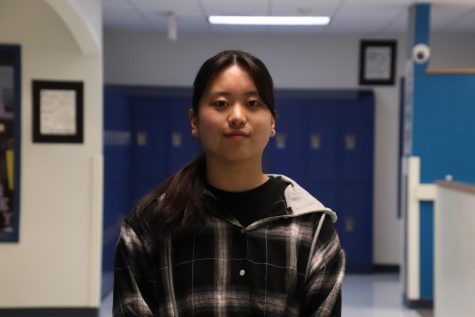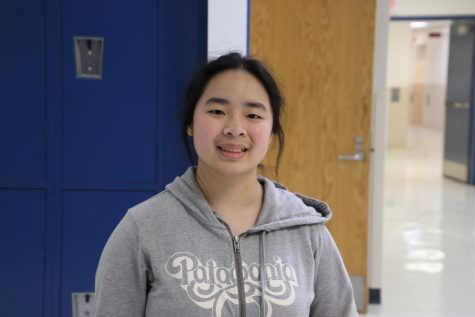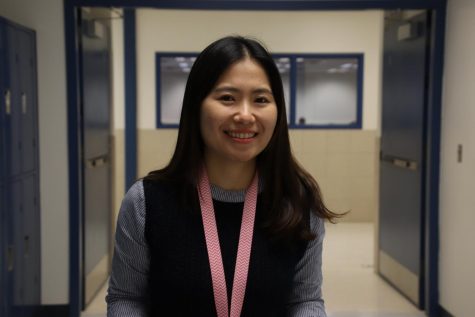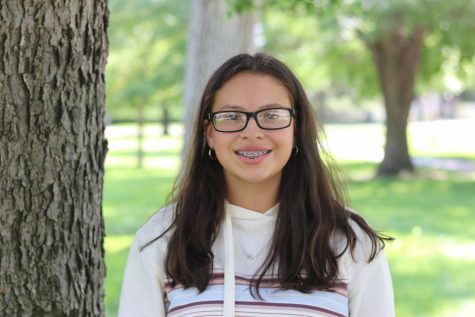Around the world
Exploring how culture affects NPHS students and staff
America is made up of different Ethnicities (—) a social group that shares a common and distinctive culture, religion, language, according to the Dictionary. However having a community of people maintaining a certain culture can be difficult.
There are 11 distinct cultures that have historically divided North America, according to Colin Woodard. Culture is the quality in a person or society that arises from a concern for what is regarded as excellent in arts, letters, manners, and scholarly pursuits, according to the Dictionary.
Yeana Moon
Being a part of these cultures can come with expectations. There are students specifically at North Platte High School who try to maintain their culture and traditions.

6,671 miles away from home sophomore Yeana Moon tries to cultivate her Korean culture.
Moon had lived in South Korean and Ethiopia before she moved to the United States last year. “I’m South Korean, I was born in South Korea,” said Moon.
When moving to the states Moon had obstacles to overcome. “When I first got here it was a bit hard. I was a bit not good in English so I had to develop my English skills,” said Moon. With that came some stress that was present to Moon. “At first it was mentally stressful because I couldn’t talk to anyone because I didn’t know anyone,” said Moon. “So I had to learn a lot on my own but now I have my friends and teachers.”
To keep the Korean culture alive Moon’s family continues to celebrate their traditions, including the holiday Seollal. “It’s a day where they bow to their grandparents and give them money,” said Moon.
Even with celebrating traditions from home, Moon misses the food. In order to enjoy Korean meals Moon’s family has to go to different lengths. “We travel to Denver and there’s a korean market and we bring it here to enjoy, ” she said. “It’s different because it’s frozen food but it’s good.”
Moon tries to cultivate her culture while trying to be a part of American activities. She said “We try to do more normal things, so on the weekends, we will take our dog to the dog park.”
Whether they’re good or bad, Moon feels that Americans have stereotypes about other countries. “Since I’m Asian, I heard that the universities see us with more expectations and that I will have to do more,” she said.
There are always more things to learn about different cultures and languages. Moon wishes that those who live in America should know how the Korean Language was created. “It actually is really interesting,” said Moon.
Being in a non-diverse school, Moon felt hesitant to make friends. “It’s kinda hard to make friends because I’m shy and we [her siblings] are the only Korean kids here that I’ve met,” said Moon. After some time Moon adapted and enjoyed the people around her. She said “I met many kind people here.”
Mia short

People aren’t all knowing of their culture from the beginning, it takes time to learn. For freshman Mia Short it will take learning.
Short was born in China, but only lived there for two and a half years. This has caused her to be separated from the Asian culture.
FSI research indicates that it takes 480 hours to reach basic fluency in a new language. Short wasn’t around the Chinese language long enough to learn it. “I only speak English but I had to do speech class because I couldn’t pronounce things well,” said Short.
Short has lived in America for almost all of her life but has not been involved in her Asian culture. She said “I was adopted and so my family is American.”
She created a new environment that she had to grow up in. “I adapted to my family’s culture which is now my culture,” said Short. “I never knew my birth parents back in china so I just did what my family does.”
Even though short isn’t as involved in her Asian culture, she believes it’s important to at least learn information about it. “I don’t celebrate my culture but I wonder what it’s like and research it,” said Short.
When moving to the United States, families tend to bring their traditions and culture. “I feel like people want to try a new life out so either they adapt to it or keep their traditions and bring it to their new place,” said Short.
Different cultures can be expressed and learned in multiple ways. Some are like Yeana Moon who try to cultivate her Korean culture and keep it alive in the states. Others are like Mia Short, who don’t know their country’s culture, but still find it interesting to learn about.
Hanna Kim
Most people come to the states for a better life, and EL teacher Hanna Kim came for an education. “I already was a college student in South Korea, I was studying computer science. I wanted to study abroad, or for at least a year,” said Kim.
EL is an English learning class at NPHS. “So here in class, they learn how to form the language like learning new words and making a better grammar pattern,” said Kim. “So when they actually go to their regular classes, they can apply knowledge from here, and make a better score.”
This class is for students who don’t have English as their first language and Kim believes it’s a necessity to learn it in America. “Not only me, students who learn the language see it very challenging. In the future, they have to do the taxes or you know, they have to pay for things on their own,” she said.
English wasn’t only hard for Kim’s students, it was also difficult for her. “I moved to the States about seven years ago. So I was already an adult, and I didn’t know a lot and I didn’t know how to communicate,” said Kim. “So that was very, very, difficult.”

Even though Kim is more developed in English and has gotten an education, she still experiences some struggles. “It seems like it’s hard to see any Asian student population or more diverse cultures,” she said. “So I think since I’m emerging in this town, it’s hard. It’s very hard to find my cultural stuff and everything is far from here.”
Kim travels in order to maintain her culture and continue her traditions. “I’m Korean, so I miss my Korean food. So I’ll go to Denver or Omaha to find restaurants that I can really enjoy my culture or grocery stores,” she said.
A tradition in her family is celebrating holidays, but at times it can be difficult to celebrate. “The new Lunar New Year is really big in my country,” said Kim. “It’s really hard to keep up with it, but I still do talk to my parents about how they’re spending their holidays, and I wish I could be there.”
The amount of cultures represented can depend on both first and second generations. “For example, my child would have a different culture than me like I experienced the full Korean culture,” said Kim.
Whereas Kim experienced her culture in South Korea and her child in America. “The cultures are very different America, like very gentle and in Korea, we’re very direct. It’s okay to be direct. So there will be certain ways that my child wouldn’t know how to behave or how to act differently,” said Kim.
Kim tries to stay engaged with her students by asking about their countries and experiences. She said “I have often asked other students, what do you do at home? Like, do you do cultural things at home? Or like how do you spend your days and most majority of students home?”
Surrounding yourself with things that are connected to your country can help keep the culture present. An example is that a student of Kim’s likes to watch Chinese dramas. “That’s a big deal for him. So I think that’s really helpful for him to keep up with his culture,” said Kim. Another way is that some students listen to music, eat certain foods, and even engage with people of the same ethnicity. “Sometimes they speak Spanish in the morning and they gather together with other Hispanic students,” she said.
When information about different cultures is not learned and/or taught there can be confusion. In Hanna Kim’s case her language and ethnicity gets mistaken. “Many people think I could speak Chinese or all the Asian languages just because I am Asian,” said Kim. “So I think people should know that each country has different language, different culture, so that they don’t generalize that Oh, just because you’re Asian, you could communicate with all Asians.”
Kim has taken the opportunity to help students learn English while still expressing themselves. “Since we are so diverse we know that culturally we want to respect each other, everybody’s different,” said Kim. “We could be a minority in this town so we want to encourage each other.”
“America is a land of opportunities,” said Kim. One of the reasons people come to the United States is to have the opportunity to create a better life for themselves. “When I first moved I was thinking like, this land is so blessed,” she said. In America there is more freedom than there is in other countries. “I think there will be more people who would love to come to this place[America],” said Kim.
Moving to a new country can come with different changes. “In order to get more benefits like voting for a president, we’ll have to change our [citizenship] status,” said Kim. While parents move their children across the country for a better education there can be some downfalls. “Parents want them [their children] to have a better education here and to get a good job in the future. But cons is they’re losing their language and culture,” she said.
“As long as you take the time to actually go to that country and experience what it is you will learn,” said Kim.

My name is Priscila Mondragon and I am a Senior. This is my second year on the newspaper staff. I earned a Best of Sno award for my Stolen Senior Year...

My name is Priscila Mondragon and I am a Senior. This is my second year on the newspaper staff. I earned a Best of Sno award for my Stolen Senior Year...
